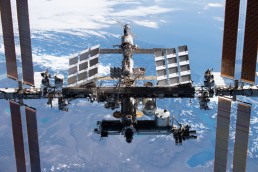July 24, 2023
Bartolomeo – The Easy Way of Bringing Payloads to the ISS

July 24, 2023
Bartolomeo – The Easy Way of Bringing Payloads to the ISS



“Bartolomeo is for everyone,” says Steimle. New entrants and established players from around the globe appreciate that on Bartolomeo, flying a LEO mission becomes comparatively easy and affordable, and this is reflected by the customer base: “We are looking at a quite healthy mix of customers,” he says. “Of course, Space Agencies welcome the opportunity of this additional payload space, but we have also signed up commercial customers and research organizations – and some capacity remains.”First Payload Launches in 2023 With first payloads being launched and installed on the Bartolomeo platform in the course of 2023, what was once no more than a vision of a small group of engineers from Bremen, Germany, is now becoming a firm reality. Some Examples of Payloads Slated to Fly on Bartolomeo
“Bartolomeo is for everyone,” says Steimle. New entrants and established players from around the globe appreciate that on Bartolomeo, flying a LEO mission becomes comparatively easy and affordable, and this is reflected by the customer base: “We are looking at a quite healthy mix of customers,” he says. “Of course, Space Agencies welcome the opportunity of this additional payload space, but we have also signed up commercial customers and research organizations – and some capacity remains.”First Payload Launches in 2023 With first payloads being launched and installed on the Bartolomeo platform in the course of 2023, what was once no more than a vision of a small group of engineers from Bremen, Germany, is now becoming a firm reality. Some Examples of Payloads Slated to Fly on Bartolomeo